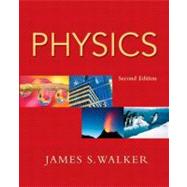
Note: Supplemental materials are not guaranteed with Rental or Used book purchases.
Purchase Benefits
What is included with this book?
(NOTE: Each chapter concludes with Chapter Summary, Problem Solving Summary, Conceptual Questions, and Problems. Volume 1 includes chapters 1-18, Volume 2 includes chapters 19-32.)
Applications in the Text.
Preface to the Instructor.
Preface to the Student.
Guide to Features of the Text.
1. Introduction.
I. MECHANICS.
II. THERMAL PHYSICS.
III. ELECTROMAGNETISM.
IV. LIGHT AND OPTICS.
V. MODERN PHYSICS.
APPENDICES.
Physics
The New copy of this book will include any supplemental materials advertised. Please check the title of the book to determine if it should include any access cards, study guides, lab manuals, CDs, etc.
The Used, Rental and eBook copies of this book are not guaranteed to include any supplemental materials. Typically, only the book itself is included. This is true even if the title states it includes any access cards, study guides, lab manuals, CDs, etc.